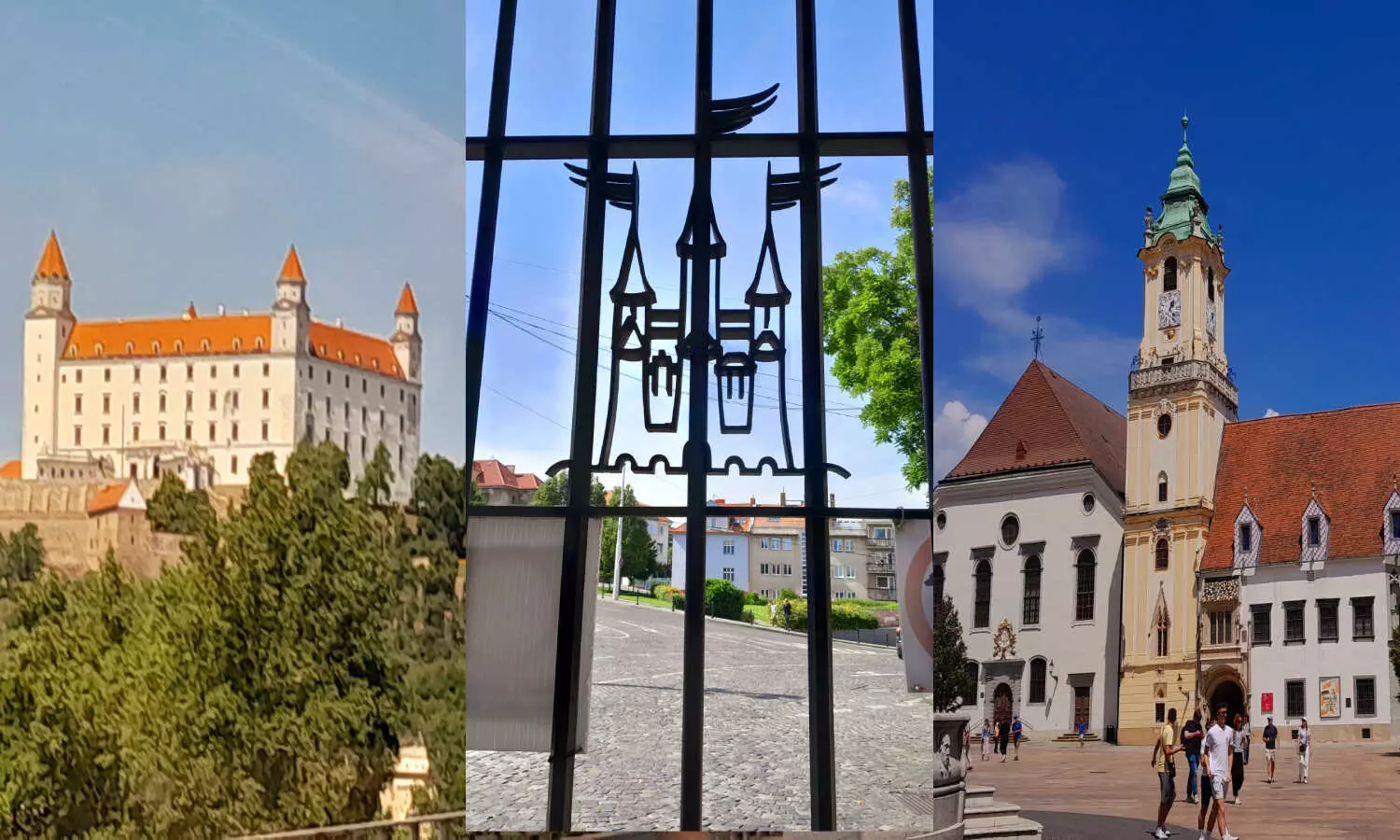Bratislava: Slovakia’s captivating capital beckons with scenic charm
Bratislava is a beautiful little gem on the Danube River, complete with lovely architecture, jewellery shops selling amber and cafes serving delicious local food
By Beyniaz Edulji
Bratislava was formerly called Pressburg from the 16th century until the end of World War I
Hyderabad: We took a day trip to Bratislava, the capital of Slovakia, from Vienna in Austria as it was a short and scenic drive with vineyards and the Little Carpathian Mountains in the background.
Bratislava was formerly called Pressburg from the 16th century until the end of World War I and was a part of the Kingdom of Hungary and the Habsburg Empire.
Relaxed sightseeing
Many tourists visit Slovakia for its more relaxed and serene environment. Bratislava, the capital, with its population of around 4,25,500 persons is a charming old town with cobblestone streets, buildings steeped in history and the imposing Bratislava Castle overlooking the Danube River.
Bratislava is very close to both Austria and Hungary. It is surrounded by vineyards and the Little Carpathian Mountains, crisscrossed with forested hiking and cycling trails. The pedestrian-only 18th-century old town is known for its lively bars and cafes. Perched on a hill, the reconstructed Bratislava Castle overlooked the old town and the Danube River.
Young capital with a youthful population
The capital of the Slovak Republic, Bratislava, is also referred to as the ‘Beauty on the Danube’. It has a long and interesting history, but it also is the centre of the most dynamically developing region of Central Europe at present.
The city is in the southwest of Slovakia and straddles both banks of the Danube and the foothills of the Little Carpathian Mountains. It was always a commercial centre over the centuries because of its prime geographical location.
Today, the city witnesses the rapid development of the young Slovak Republic. In spite of its exciting history, Bratislava is one of the youngest capitals of the world and its population is also very youthful.
Every year, the city attracts increasing numbers of tourists from all over the world. They are attracted by the warmth of this small city that also possesses a rocking social life and an old-world charm.
Palaces, modern shopping and trade centres, the mouth-watering cuisine of the Slovak cooks and brewers, friendly locals and various international cultural and sports events and exhibitions held here are the reasons that make it a tourist hub. Jewellery stores selling gorgeous amber jewellery found in this region are also a big draw for tourists.
What is the history of Bratislava?
Bratislava, formerly called Pressburg, has a long and interesting history which goes all the way back to 1291 when its inhabitants became the free citizens of a royal borough.
In the 14th and 15th centuries, there was rapid development in trade here. The opening of the Academia Istropolitana in 1467 strengthened the importance of Bratislava as the cultural and educational centre of the then Kingdom of Hungary.
After Turks penetrated deeper into the Kingdom, Bratislava was established as the capital of the Kingdom of Hungary, the seat of the Hungarian Diet (political assembly), central administration and the coronation town of the Hungarian Kings and Queens.
Eleven Kings and eight royal wives were crowned in Bratislava in the years between 1563 and 1830. The counter-Turk wars in the 16th and 17th centuries somewhat interrupted its development but in the 18th century, especially during the reign of Queen Maria Theresa, the significance of Bratislava increased greatly.
The Siege of Bratislava by Napoleon and the French Army took place in 1809 and lasted a year but the city was undefeated. Church Spires were melted to make cannon balls. Many wonderful palaces and buildings still survive from that period.
The city became the centre of culture in the 19th century and Bratislava was the cradle of the Slovak national emancipation in the form of revolutionary events, workers movement and the First World War. Bratislava became the centre of the political, economic and cultural life of Slovaks after 1918.
Bratislava now is a modern city and the seat of most important political, economic, social and scientific bodies and institutions.
Bratislava Castle
The imposing red-roofed Castle of Bratislava can be seen from afar. From its ramparts, the view overlooking the Danube River and the UFO Road Bridge – named after a restaurant on the bridge that resembles a flying saucer – is spectacular.
Old Town
The most attractive part of Bratislava is the Old Town where the most historical sights as well as cultural institutions are concentrated.
Its narrow lanes surprise and delight walkers with its signs of history in the middle of our modern world. The significant structures in the historic centre of the city are all a part of the Monument Town Reserve.
Michael’s Gate built around 1300 AD is one of the city’s oldest buildings. The old town has many outdoor restaurants serving local cuisine as well as ice-cream places serving unusual flavours like Poppy Seed and Sour Cherry along with the old favourite flavours such as Chocolate and Salted Caramel.
Transport
Trams and quaint ‘hop-on hop-off’ Red Buses offer a variety of tours and excursions to see modern buildings like the Slovak Radio Building, which is in the shape of an inverted pyramid, as well as the old castles and churches, statutes and fountains.